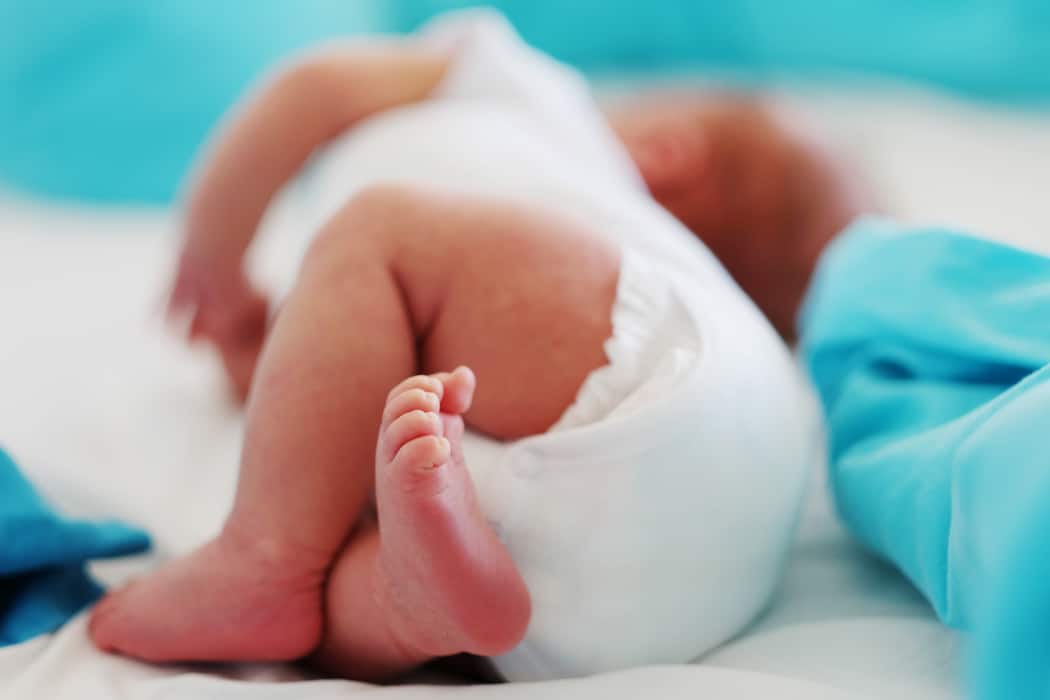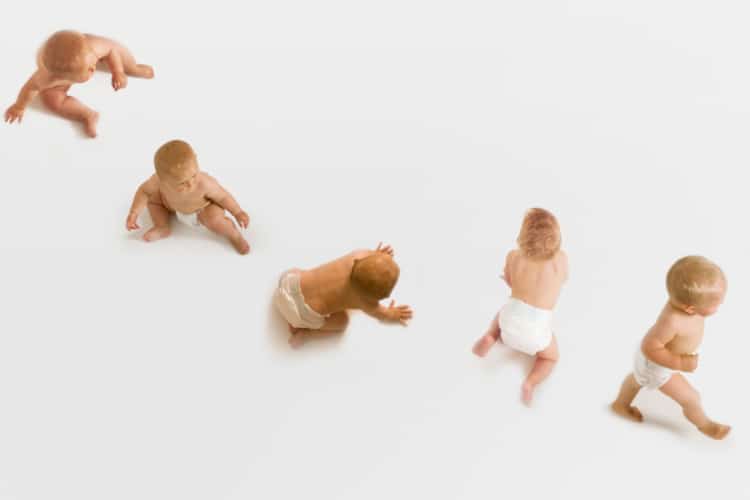Just when you think you’ve gotten over your postpartum anxiety, your baby decides to throw you a curveball and stop kicking with his left leg. What in tarnation is going on?
Hello, first-time mom! Is your baby constantly kicking one leg? Are you looking for information and advice on what to do about the problem? No need to worry. We got your back!
Today, we’ll talk about asymmetric kicking in babies. You’ll find out if you’re in a pickle, or if your kid’s messing with you. You might even learn a thing or two about your baby. Let’s dive in.
Content:
- Understanding the Reasons Behind Your Baby’s Persistent One-Leg Kicking Behavior
- Exploring the Concept of Asymmetry
- Understanding Asymmetrical Kicking in Babies: Identifying Potential Contributing Factors
- When Do Babies Typically Gain Control Over Their Kicking and Correct Asymmetrical Movements?
- When Should Parents Seek Medical Evaluation for Asymmetrical Kicking In Their Baby?
Why Is My Baby Constantly Kicking One Leg?
First of all, calm down. In most cases, kicking with one leg is a normal stage of the baby’s development.
According to a study from the Physical Therapy & Rehabilitation Journal, newborn babies kick both legs equally.
However, once they reach around 2 months of age, they may start showing a preference for kicking one leg over the other.
During this period, spontaneous kicking becomes more complex and controlled. A baby’s environment can start affecting his kicking patterns.
In 2016, researchers from the University of Haifa studied babies aged 7 to 12 months. They found that 78% of the babies have preferences on which leg to use when kicking, crawling, or standing.
The researchers concluded that it’s a normal stage in a kid’s life. During this stage is when the brain’s side dominance may be manifesting. Your baby will start showing you if he’ll be a left-brained intellectual or a right-brained creative!
Is There Something That Needs to Be Done to Encourage Equal Movement?
Should you do something if you see your baby constantly kicking one leg?
Dr. Atun-Einy from the same university states that if a baby kicks one leg more than the other, it’s an indication of functional asymmetry.
Meaning, your child is in a stage where he’s growing into a right-handed or left-handed person. It could also be when they start showing signs of being dominant on the left or right side of the brain.
For this reason, you shouldn’t attempt to influence or intervene with the preference. There’s no need to force the kicking into turning symmetrical.
Do note that not all cases are the same!
It’s important to observe the baby for signs that the asymmetry is abnormal. There are still some cases where the baby may need to get checked by a doctor.
What Is Asymmetry?
Previously, we talked about functional asymmetry, but what does it mean?
Asymmetry is a clinical condition that may involve your child’s posture, movement, and shape. It means that the left side and the right side are not proportional.
Functional asymmetry affects movement. It’s when your kid kicks on his left leg more than the right leg. This type of symmetry may be normal at certain ages.
In more worrying cases, asymmetry may be physical. You can see physical asymmetry when one of your kid’s legs is shorter than the other. In this case, you may want to take your baby for a checkup.
What Factors Can Cause Asymmetrical Kicking in Babies?
Look out for these signs that may be the reasons why your baby’s constantly kicking one leg.
1. Muscle Weakness
Muscle weakness, hypotonia, or floppy infant syndrome is when your baby has poor muscle tone. Your baby will feel like a limp rag doll when you pick him up. His limbs may even be more flexible than usual.
Common symptoms of muscle weakness include difficulty in holding his head up and struggling to sit, eat, or balance. Moreover, your child may find it hard to breathe or talk.
Muscle Weakness and Hip Dysplasia
Muscle weakness commonly causes dislocations within a child’s body. If your baby is kicking one leg over the other, it may be a sign of hip dysplasia.
Hip dysplasia is common in newborn females and usually affects the left leg. It happens when the hips develop incorrectly due to weak joints and ligaments.
To diagnose hip dysplasia, doctors will do a physical exam, x-ray, or ultrasound. You’ll need to see an orthopedic specialist for treatment.
Treatment for Muscle Weakness
In case of muscle weakness, doctors may need to do an MRI or CT scan and test your baby’s motor skills, balance, reflexes, and coordination.
To treat muscle weakness, your baby has to go through physical therapy. Moreover, it’s better to seek help as soon as your baby gets diagnosed with this problem.
2. Developmental Delays
A developmental delay occurs when a child doesn’t gain the same motor and sensory skills as other infants of the same age. Developmental delays are common in preterm babies.
In 2005, researchers measured the kicking frequency of premature babies versus full-term babies. They noticed that premature babies have different spontaneous kicking patterns versus babies born after the full term.
The researchers found that pre-term babies have less ability to use limb movements to interact with their environment.
What’s more, they discovered that full-term babies change kicking frequency at 12 months of age.
What Does This Mean and Why Does My Baby Always Kick One Leg?
What we gather from this study is that your child’s kicking patterns may vary depending on what developmental stage he’s in.
Premature babies with developmental delays may be kicking both legs without bias. However, full-term babies naturally start kicking with one leg at an earlier stage of their life.
It may take full-term babies 12 months to normalize their kicking patterns. Yet, some premature infants could need more time to achieve this level of control.
The difference in development is why some babies kick while others don’t. It’s completely normal, so don’t worry if your baby is kicking or not.
What Should You Do?
The researchers explained that the differences in premature and full-term baby kicking are present. However, it doesn’t stay like this for long.
In most cases, once the babies reach 12 weeks old, the contrast between the two becomes insignificant. Healthy premature babies shouldn’t take that long to control their feisty little kicks.
It’s best to observe your kid for signs of abnormality. If you suspect that your child lacks autonomy over his limbs, you can bring him to your pediatrician for a check-up.
3. Environmental Factors
Researchers from the same study made a follow-up conclusion!
Interestingly, they said that full-term babies can choose which leg to kick when interacting with nearby objects. This means that the environment affects which leg a baby kicks.
Is there a toy on your baby’s right? Do you normally come up to one side of your baby’s crib?
Babies can decide to kick one foot over the other in the presence of an object they want to touch. It could be that a toy to your kid’s right is making him favor this leg. He just wants to play with it.
Other environmental factors could be gravity or physical constraints like a blanket.
How Long Does It Typically Take for Babies to Correct Asymmetrical Kicking on Their Own?
Fun fact, babies begin kicking while they’re still in the womb as a form of reflex. Infants kick four times per minute when awake!
It’s a way for babies to learn about their bodies and their environment, especially when done asymmetrically.
Asymmetric kicking is a normal process of development, but how long will it take for your infant to correct the kicking? Will your baby naturally correct it over time with no intervention?
The answer is yes!
Babies don’t have control over their limbs in the first eight weeks of their life. Most movement is from reflexes. They’ll start kicking after eight weeks.
By 24 weeks, your infant should start to gain some control over his legs. He’ll have control at 12 months and up. At this point, your baby can stand, take independent steps, and correct the asymmetrical kicking.
When Should Parents Seek Medical Evaluation for Asymmetrical Kicking In Their Baby?
Bear in mind that it’s okay for children to have different developmental milestones, but if your baby still has asymmetrical kicking by 12 months, then you can seek medical evaluation.
Moreover, you should ask a doctor for advice if you encounter some of these problems:
- Your baby has trouble raising his head and seems floppy when you carry him.
- You see signs of physical asymmetry like uneven legs or a droopy face.
- The baby’s fat rolls seem uneven.
- Your child is behind on the milestones for holding his head up, balancing, and sitting.
- He’s having trouble with sucking and chewing, or he has shallow breathing.
To Sum Up
A baby constantly kicking one leg shouldn’t be a cause for worry. In most cases, it’s a normal phenomenon that happens during the developmental stage.
There may be some cases where you should seek a doctor’s help. You should go to a doctor if your baby has signs of muscle weakness or physical asymmetry, or if your baby misses some developmental milestones.
However, in general, your baby should be totally normal.
We hope that our article helped you and eased some of your worries.


